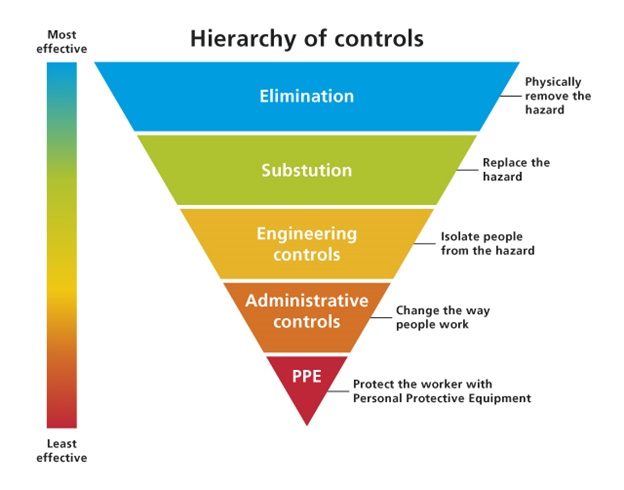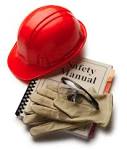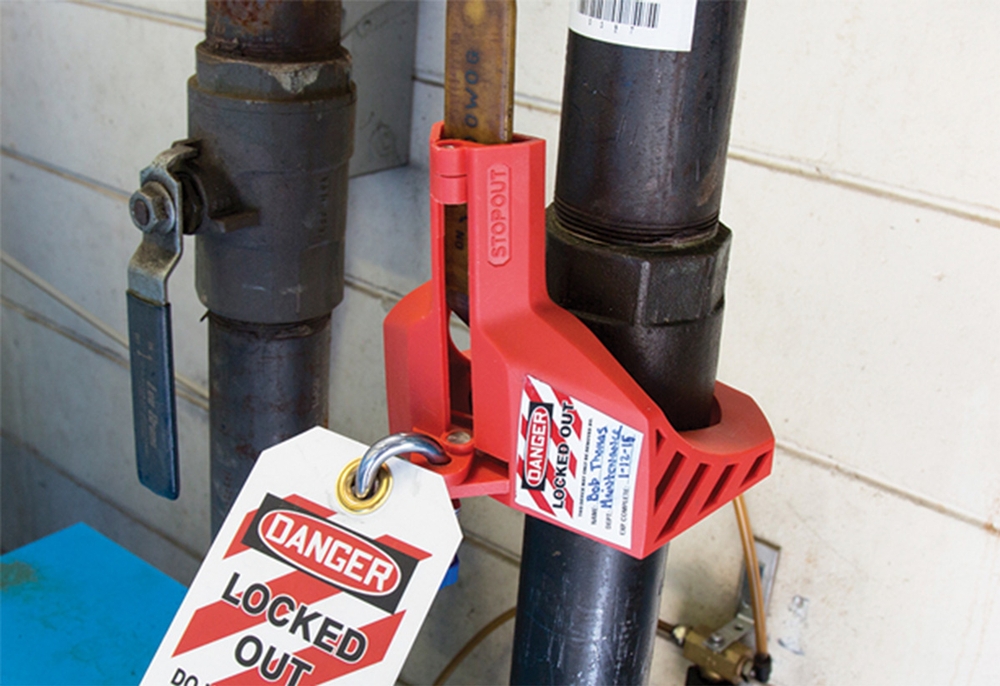Title Page
-
Site conducted
- Abby
- Trademark
- 4SK
- Infinity
- Sumas
- Ruby Creek
- BC Packhouse
- Langley
- Calgary Packhouse
- Crossfield
- Wellington
- Kingsville
- Leamington
- Other:
-
What site is being audited?
-
Conducted on
-
Prepared by
-
Location
-
Department
- Phase I
- Phase II
- Growing
- Phase III
- Casing Barn/Dirt Shed
- Crew
- Cultivation
- Prep
- Maintenance
- Harvest
- Packing
- Shipping/Distribution
- Office Space
- Other:
-
What department is being audited?
Previous Audits
-
Has the previous workplace inspection sheet been reviewed with the area manager/supervisor?
-
Are there any outstanding/not completed items on previous inspection?
-
List item(s)
PPE
-
Are the treads of associates shoes in good condition and in alignment with Highline standards?
-
Is additional PPE required in the department? (i.e. safety glasses, hard hats, etc)
-
Are all associates wearing required PPE in alignment with safety requirements for the area?
-
Does PPE have a designated space to maintain housekeeping, cleanliness and functionality?
-
Is PPE being used in the working area in good condition and free of defects/damage?
-
REMOVE PPE FROM THE AREA AND REQUIRE THE ASSOCIATE TO STOP WORK UNTIL PROPER PPE IS USED
-
Are there signs in installed and in good condition to indicate the requirement for additional PPE?
-
Is welding being conducted in the area?
-
Are associates wearing a welding helmet/mask?
-
Are welding barriers/screens in place to prevent other associates from being exposed to welding flash?
-
Are associates wearing a respirator and/or have adequate ventelation?
-
Are associate's clothing FR rated?
-
Are associates wearing welding gloves?
-
Is there a hot work permit present?
-
Is there a fire watch?
-
STOP WORK IMMEDIATELY UNTIL PRECAUSTIONS AND CONTROLS ARE IN PLACE
-
Are there flammable or explosive materials near by? (within 9 meters)
-
STOP WORK IMMEDIATELY UNTIL PRECAUSTIONS AND CONTROLS ARE IN PLACE
-
Are respirators or PAPR units in use in the working area? (N95, Half Face, Full Face, etc.)
-
Does PPE have a designated space to maintain housekeeping, cleanliness and functionality?
-
Are sanitizing supplies provided to ensure the PPE is disinfected after each use?
-
Are respirators worn by all associates?
-
Are associates clean shaven and fit tested for respirator use?
-
Are correct filters in use and within expiration date?
Housekeeping
-
The work area is free of tripping hazards such as tools left on the ground, wiers, etc.
-
Shovels, brooms and squeegee tools are present, accessible and in good condition for associates to use in their area?
-
Are tools kept up off the floor and stored properly?
-
Area floors clear of fallen mushrooms, casing material and debris?
-
Are floors wet or slippery?
-
Associates who are standing for more than 30 minutes in a static position are standing on an ergonomic mat
-
Safety overhead mirrors are in good condition and free of cracks or disrepair
-
Are materials stored neatly and safely?
-
Are there step ladders or stools to get to materials on higher shelves
-
Are heavy and large objects stored on lower shelves?
-
Is there evidence of combustible dust in the working area?
-
Does any electrical equipment show signs of water exposure?
-
Do associates have access to hand sanitizer, hand washing stations and clean drinking water?
-
Are there garbage disposal bins, broken pallet disposal bins, recycle bins, etc. in the working area?
-
Are washrooms and eating areas clean?
-
Are there signs indicating the process of hand washing in the area?
-
Is there adequate toiletries and hand sanitizing supplies in the washroom areas?
Electrical
-
Is there adequate lighting in area and are lights fully functional?
-
Are junction boxes and electrical panels closed?
-
Wires are in good condition and free of damage
-
Immediately inform the area supervisor. DO NOT touch the extension cord if there is evidence of damage or it is not water proofed.
-
Electrical panels clear of obstruction by at least 3 ft on either side and infrastructure of the panel allowing for easy and ready access
-
There must be a 3 foot area clear around electrical panels. If a panel is blocked, notify the area supervisor of the issue immediately.
-
Is there equipment in the work area which requires plug-in to a 600V outlet?
-
Are there electrical gloves accessible to the associates in the work area?
-
Are electrical gloves inspected and stamped within the past year?
-
Do electrical gloves show any sign of degrading, mis-use or damage?
-
Are there plug lockout devices with the equipment?
-
Are extension cords used only for temporary power needs and water proofed?
-
Immediately inform the area supervisor. DO NOT touch the extension cord if there is evidence of damage or it is not water proofed.
-
Are extension cords out of the aisles where they can be abused by heavy traffic?
-
Is permanent wiring used instead of extension cords?
Psychosocial
-
Associates do not demonstrate impairment mentally, physically or emotionally.
-
Was a supervisor reachable in the area?
-
Associates do not work alone for more then 15 minutes and have a plan in place if working alone is required
-
Are associates provided with adequate breaks through out their shift?
-
Do associates receive clear direction, communication and feedback on work tasks and their performance?
Emergency Equipment and Building Compliance
-
Is there clear instruction for all visitors and/or contractors to report to the office to sign in?
-
Are there signs and indicators indicating restricted or hazardous areas?
-
Are pedestrian doors and walkways free of obstruction?
-
Are Exterior doors are only accessible with a key card/fob?
-
Are there Emergency exits have panic/push bars installed to allow for quick and safe exit from the building?
-
Are Severe weather shelter area sign and/or indicators are clearly labeled and evident in the inspection area?
-
Are Evacuation Points and shelter areas are identified with a sign or other indicator?
-
Lighting is adequate in parking areas and out door walking areas
-
Alarm system functioning (if applicable)
-
Parking Lot lines are painted and applicable signage is present
-
Are there signs indicated smoking and vaping is prohibited on all entrance points, eating areas, first aid rooms and wahsrooms?
-
Are there designated smoking areas available to associates with clear signs posted to indicate their location?
-
Are there cigarette disposal units provided to associates?
-
Are there signs of cigarettes being disposed of improperly?
-
Are emergency doors clearly indicated by a sign and free of obstruction?
-
Emergency lights functioning and present where required (exits, and in alignment with building codes).
-
Are garbage disposal bins away from living structures?
-
Are there any signs of wildlife or other animals onsite which could pose a hazard to associates?
-
Eye wash stations present, marked with a sign, clear of obstruction, in good working condition and clean
-
Fire extinguishers present, marked with a sign, and clear of obstruction
-
Are alarm systems clear of obstruction and indicated by a sign?
-
Fire extinguishers are inspected within the last 30 days and have a sign indicating their location
-
Are fire maps posted at exits, legible and up to date?
-
Are first aid stations and rooms inspected within the last 30 days and indicated by a sign??
-
Is there at least one first aider on site for the department?
-
Is there an AED in the working area?
-
AED Units are indicated with a sign
-
AED Battery reading is, "OK"
Lifting Devices
-
Are there rails, trolleys or lifting devices in the working area?
-
What type of devices are present?
- Hydraulic Lift Device/Platform Class
- Pneumatic Lift Device/Platform Class
- Crank - Manual Lift Device/Platform Class
- Electrical Lift Device/Platform Class
- Growing/Tunnel Doors Lift Device
- Harvest Manual Set Up Platforms
-
Are lines in good condition and free of cracks, splits or pin holes?
-
Are controls free of malfunctions and used in accordance with SOP's?
-
Are elevating devices used only within their capacity?
-
Is hydraulic fluid at appropriate levels for operations?
-
Is there any signs of leakage from the device?
-
Has the device received and annual inspection in the past year?
-
Are cable systems are in good condition?
-
Can trolleys move freely and unhindered?
-
Are trolley system top and bottom rails in good condition and free of breaks in welds, corrosion, bends, twists, warps, etc.?
-
Are trolley pins engaged where required?
-
Workplace Inspections were completed by a supervisor prior to work beginning
-
Are weight capacity stickers installed, legible and complied with by operators?
-
Has the device received and annual inspection in the past year?
-
Are cable systems are in good condition?
-
Are the crank systems in good condition?
-
Can trolleys move freely and unhindered?
-
Are trolley system top and bottom rails in good condition and free of breaks in welds, corrosion, bends, twists, warps, etc.?
-
Are trolley pins engaged where required?
-
Workplace Inspections were completed by a supervisor prior to work beginning
-
Are weight capacity stickers installed, legible and complied with by operators?
-
Has the device received and annual inspection in the past year?
-
Are door lifts in good condition and free of bending, twisting, splits, etc.?
-
Are doors in good condition and free of bending, twisting, splits, etc.?
-
Do doors bare a legible label for weight ratings and other relevant information?
-
Are securing brackets in good condition and free of bending, twisting, splits, etc.?
-
Are fail safes in place?
-
Are rails and casters in good condition and free of bending, twisting, splits, etc.?
-
Trolley welds in good condition (inspect platforms at random)
-
Trolleys move freely and unhindered
-
Trolley system top and bottom rails in good condition and free of breaks in welds, corrosion, bends, twists, warps, etc.
-
Platforms rivets and welds are in good condition
-
Do associates wear fall restraint belts while harvesting on platforms?
-
Are there hoists or cranes in the working area?
-
Are there signs of bending, cracking, or damage on the lift device?
-
Are elevating devices used only within their capacity?
-
Are all of the bolts and nuts tightened firmly?
-
Any deformed, cracked, or corroded members such as the casters, arm or base?
-
Is the load rating marked and legible on the device?
-
Has the device received and annual inspection in the past year?
-
PM items completed by Maintenance?
-
Are there scissor/man lifts in the working area?
-
Are devices operated in accordance with SOP and training and in good working condition?
-
Are pre-use inspections completed by the operator prior to use?
-
Is the operator wearing a fall arrest system and tied off at all times?
-
Is the device in good condition?
-
Are elevating devices used only within their capacity?
-
Has the device received an annual inspection in the past year?
Machinery and Equipment
-
Is equipment/machinery or other items tagged out of service if damaged or in a state of disrepair?
-
Is there machinery in use in the working area?
-
What types of equipment were inspected? (choose all that apply)
- Headfiller
- Winch
- Tunnels Winch
- Hopper
- Packing Conveyor
- Slice Machine
- Box Machine
- Box Compactor
- Metal Detector
- Blending Line
- Overhead Tunnels Conveyor
- Basement Conveyor
- AXIS Unit
- Cassette
- Emptying Conveyor
- Boiler/HVAC/Air Handler
- Truck/Trailer
- Auger/Mixer
- Bay Door
- Other:
-
What equipment was inspected?
-
Are guards in good condition and fastened at least in two separate locations?
-
Are e-stops within reach of the operator(s) at all times?
-
Are e-stops functioning?
-
STOP WORK IMMEIDATELY UNTIL THE ESTOP CAN BE REPAIRED
-
Are equipment and machinery kept clean and parked in a designated area after job tasks are completed?
-
Are guards in place where required under CSA?
-
Are doors and panels interlocked?
-
Are interlocks functioning?
-
STOP WORK IMMEIDATELY UNTIL THE INTERLOCK CAN BE REPAIRED
-
Do guards prevent access to a hazardous area or moving part of a machine?
-
Are fail safes in good working condition, in place and being used in alignment with SOP?
-
Are labels and warning signs in place, legible, displayed in applicable languages and where required under CSA?
-
Are pre-use inspection for equipment complete and signed off?
-
PM items completed by Maintenance?
-
Are lockout stations in the area?
-
Are lockout stations adequately stocked with locks, hasps and tags?
-
Are associate performing maintenance, cleaning, adjusting, etc. on equipment?
-
Do associates working on site have lockout training?
-
Do associates turn off disconnect switches before unplugging equipment.
-
When performing maintenance, machinery and hazardous energy was identified, locked out, tagged out and tried out.
-
Lockout devices are readily available to associates
-
Machinery being cleaned, adjusted or repaired locked out and tagged out
-
Estops are functioning and in good condition
-
Cords are stored properly to prevent damage or unsafe working conditions
Change Management
-
Is there any new or modified equipment in the department?
-
Have there been any recent changes to the processes? i.e. equipment moved or relocated?
-
Was the JHSC involved at the onset of the process change or procuring the equipment?
-
Was a Pre-start completed with the JHSC prior to it being released to production?
Vehicles
-
Are there vehicles in use in the working area?
-
Are there signs, in good condition alerting pedestrians to the hazard of operating vehicles in the area?
-
Are fumes and exhaust controlled?
-
Are pre-use inspections books with the unit?
-
Are vehicles pre-inspected and in good working condition?
-
Do operators follow SOP's and training?
-
Are horns sounded at blind spots, doorways, pedestrian areas, etc?
-
Are overhead mirrors located at all blind spots?
-
Are associates wearing High-visibility clothing in the working area?
-
Are there steps or ladders on the vehicle?
-
Are the handrails, handholds in place?
-
Are the stairs in good repair?
-
Are steps free of objects, tools or debris that could cause slips?
-
Are there slow moving vehicles in the area?
-
• Is there a slow moving vehicle (SMV) sign on the rear of the vehicle and in good condition?
-
Are there POWER TAKE OFF (PTO) vehicles in the area?
-
Do all PTO’s have shields & guards in place?
-
Is there a master shield in place where your PTO meets the vehicle?
-
Are shields on PTO’s checked periodically to ensure that they rotate freely? CHECK WITH POWER OFF AND LOCKED OUT.
-
Are there tractors in the area?
-
Is the tractor equipped with a rollover protective structure (ROPS) and seatbelts?
-
Are all protective shields and guarding in place?
-
Is there a slow moving vehicle (SMV) sign on the rear of the tractor or towed equipment for roadway travel?
-
When towing equipment, are safety hitch pins and chains in use and in good condition?
-
Is there an inspection book with the vehicle?
-
Are tractors pre-inspected and in good working condition?
Ladders
-
Are there ladders, stools or rolling staircases in the working area?
-
Stools and ladders in good condition?
-
Are ladders set up properly before use?
-
Ladders do not demonstrate signs of alteration or repairs.
-
The correct ladder type and height is being used for the job task.
-
Feet and braces of ladders are in good condition.
-
There are no loose bolts, no cracks, no splits in frames, excessive rust/corrosion observed.
-
Rails are not twisted or distorted.
-
Steps are not missing, loose or broken.
-
Are permanent ladders for roof or other access in the area?
-
Are permanent ladders in good condition & inspected regularly?
-
Do ladders prevent unauthorized use?
-
Do ladders ascending to areas over 10 ft in height have 42" rails around the top of the ladder or anchor points to prevent falls?
Chemical
-
Is there an SDS binder available to associates?
-
Has the SDS binder been reviewed in the past 2 years?
-
Is there a chemical storage area in the working area?
-
Chemicals are stored on spill containment pallets and a emergency spill kit is available in the event of an emergency
-
Is a spill kit within 50 feet of the storage area and indicated by a sign?
-
Are flammable liquids properly stored?
-
PPE available and in good condition for handling chemicals as outlined by SDS sheets
-
Chemical sotrage prevents un-authorized persons from accessing hazardous substances
-
Are there signs indicting only authorized personnel may enter the space due to the presence of WHIMS 2015 controlled products?
-
Associates have WHMIS 2015 training - especially those who access chemical storage areas
-
Proper fire fighting equipment within 10 ft of the chemical storage area
-
Is the storage area and products organized to keep incompatible products separated?
-
Are hazardous products stored away from heat sources?
-
Are containers in good condition and free of leaks or damage?
-
Are all products labelled, and are missing or damaged labels replaced immediately?
-
Are bonding and grounding connections immediately available for flammable products?
-
Is the ventilation for the storage area adequate for the products stored within?
-
Are there metal containers for oily rags and other flammable discarded items?
-
A continuous 15-min eye wash station/chemical shower is present and within 50 ft of the storage area
Docks
-
Are there docks in the working area?
-
Are dock lights functioning properly and in good working condition ?
-
Are trailer stands and glad locks are applied when loading and uploading trailers?
-
Associates do not enter trailers when loading or unloading is being performed by another associate
-
Associates use isle way mirrors when walking through the cooler and docks area
-
Blind spots and corners have warning signs and safety mirrors to reduce hazards in the working area
Heights, Stairways, Hallways and Aisles
-
Are there stairways in the inspection area?
-
Are the stairways well lit?
-
Are the handrails, handholds in place?
-
Are the stairs in good repair?
-
Are steps & walkways free of objects, tools or debris that could cause slips?
-
Are stairwells clear and unblocked?
Tap to enter information
-
Are mirrors installed at blind corners?
-
Are traffic mirrors in good condition?
-
Do associates use traffic mirrors when walking or operating equipment in the working area?
-
Do associates work in any area elevated above the working area?
-
Do associates use and inspect the approved safety harness/lanyard/lifeline and suitable anchor point?
-
Are there rails around the entire working area with a height of 42", center rail and kickplate or an anchor/tie-off point for workers to tether to?
-
Are rails, catwalks and working platforms in good condition? (check welds, structures, etc.)
Racking and Storage
-
Is there racking in the dock area?
-
Is racking in good condition (no visable damage, missing braces?)
-
Does the racking have a load capacity sticker?
-
Are there contact barriers infront of racking posts to prevent accidental contact?
Environment and Physical Hazards
-
Is it hard to hear in the area?
-
Are associate required to wear ear protection?
-
Are associates wearing hearing protection?
-
Are seasonal controls adequately supplied? (salt, shovels, sunglasses, rain gear, etc.)
-
Do temporary floor or ground openings have standard railings or someone constantly on guard?
-
Are drain covers in good condition?
-
Are workers protected from excessive heat/cold?
-
Are there confined spaces in the working area?
-
Are confined spaces clearly labeled in applicable languages?
-
Is there controls in place to prevent any access to the space?
-
Are workers permitted to work in the confined space(s)?
-
Is there currently work being conducted in the confined space(s)?
-
Are emergency and rescue procedures/equipment in place (e.g. trained safety watchers, winches, etc.)?
-
STOP WORK IMMEDIATELY AND REQUIRE ALL ASSOCIATES TO EVACUATE THE SPACE> DO NOT ENTER THE SPACE.
-
Has the work been authorized by a confined space work permit?
-
STOP WORK IMMEDIATELY AND REQUIRE ALL ASSOCIATES TO EVACUATE THE SPACE> DO NOT ENTER THE SPACE.
-
Is atmospheric testing ongoing and in alignment with Highline and CSA standards?
-
STOP WORK IMMEDIATELY AND REQUIRE ALL ASSOCIATES TO EVACUATE THE SPACE> DO NOT ENTER THE SPACE.
-
Are the confined space procedures and training available and followed by all involved?
-
STOP WORK IMMEDIATELY AND REQUIRE ALL ASSOCIATES TO EVACUATE THE SPACE> DO NOT ENTER THE SPACE.
-
Are entry and exit procedures adequate?
-
STOP WORK IMMEDIATELY AND REQUIRE ALL ASSOCIATES TO EVACUATE THE SPACE> DO NOT ENTER THE SPACE.
Return to Work
-
Are there any associates in the working area who are on modified duties or have recently returned to regular duties?
-
Is the associate willing to be interviewed? NOTE: This survey is intended to gather feedback from Highline associates who have participated in our Return to Work process. We thank your for your participation in the plan and in completing this survey. This survey is voluntary!
-
Modified work was offered to me from the onset of my report of illness/injury.
-
The RTW process was explained to me at the beginning so that I could understand what I should expect to happen at each stage of the process.
-
The modified work plan was developed with my specific needs in mind.
-
I felt I was part of the plan development process at all stages and had the opportunity to agree or disagree with the plan as proposed.
-
There was open communication between myself and members of the HR team during the plan.
-
There was open communication between myself and my supervisor(s) during the plan.
-
I felt that the RTW process was as easy and smooth as possible.
-
Additional comments:
-
Name of Associate:
-
Duration of Modified Plan:
-
Date of Injury/illness
-
Date RTW plan ended:
-
Name of associate:
New Associates
-
Are there new supervisors who require training?
-
Are there any new associates?
-
Name of Associate Interviewed
-
Did their supervisor complete a hazard walkthrough prior to the associate beginning work?
-
The associate must stop work immediately until a supervisor has trained the associate on hazards and their controls within the department.
-
Can the associate remember any hazards from their hazard walkthrough and Highline's control measures?
-
What hazards were identified and what were the controls listed?
-
Does the associate know where to go in the event of an emergency (fire, violence, power outage, severe weather)?
-
Retrained the associate on their evacuation points - Associate initial
-
Are there any comments or concerns from the associate in regards to health and safety in the workplace?
-
Comments:
Contractor Safety Compliance
-
Are there any contractor(s) in the department performing work?
-
Has the contractor(s) signed in at the front office?
-
Has the contractor(s) completed the Highline COVID19 Screening in at the front office?
-
Has the contractor(s) completed contactor safety training prior to performing work?
-
Do contractors have valid training certifications on their person or in a reachable area?
Safety Board
-
Is there a Safety and Wellness Information board in your inspection area?
-
Highline Mushrooms Safety and Wellness Policy current, present and in good condition
-
Employment Standards Information present and in good condition
-
Worker Rights Information present and in good condition
-
Workers compensation (1,2,3,4, WBC, WorkSafe Injury) Poster present and in good condition
-
Highline Mushrooms Violence, Bullying and Harassment policy and standard current, present and in good condition
-
JHSC Meeting Minutes current, present and in good condition
-
JHSC Member Photos and Contact information current, present and in good condition
-
Health and Safety at Work poster present and in good condition
-
Ministry of Labour field reports, orders, tickets and fines current, present and in good condition (if applicable)
-
Injury Reporting and Disability and Claims poster current, present and in good condition
-
List of first aiders present?
-
Emergency Contact Numbers current, present and in good condition?
-
A copy of the OH&S Act is current, present and in good condition
-
A safety and wellness policy and information binder is current, present and in good condition
-
Important information - Hazards, substances, safety alerts, etc. (if applicable)
Risk Assessment
-
Was any hazard identified which has not been identified in the past or needs to be revisited?
RECOGNIZE
-
HAZARD
-
What activity or hazard could cause injury or illness?
-
What hazard groups can cause injury, illness, property damage or damage to the environment? (select all that apply)
- Physical Safety
- MSD
- Chemical
- Physical Agent
- Psychosocial
- Biological
- Manual Material Handeling
-
What is the source of the hazard to the associate/environment?
- Compressed Air
- High Pressure Fluids
- Confined Space
- Driving
- Electrical
- Material Handling
- Material Storage
- Molten Material
- Machine or Equipment
- Slip or Trip
- Temperature
- Vehicular Hazards
- Working at Heights
-
What is the potential outcome of exposure to the hazard?
- Skin injection
- Skin injection
- Asphyxiation
- Engulfment
- Entrapment
- Explosion
- Collision
- Contact with pedestrian
- Other
- Stress
- Violence
- Arc flash
- Electrocution
- Fire hazard
- Crushing
- Fire hazard
- Laceration
- Puncture or injection
- Sharp edges - laceration/contusion
- Struck by
- Worker contact
- Fire hazard
- Trip hazard
- Worker contact
- Burn
- Fire
- Flying particles/materials - impact or injection
- Full body pinch point - crushing
- Grinding/Sanding - friction & abrasion
- Impact - stabbing & puncture
- In-running nip - entanglement, drawing in
- Moving part - entanglement, cutting, shear
- Pinch point - crushing or shear
- Rotating or sharp part - cutting or shearing
- Rotation - entanglement
- Sharp edges - laceration/contusion
- Worker contact – laceration/contusion/puncture/other
- Falls to same height
- Burn/Scald
- Falling to surface below
- Objects falling on workers below
- Other
-
How likely is the hazard to cause injury or illness now?
-
How often is the job task interacting with the hazard?
-
How severe could an incident be?
-
What is the level of risk? (Probability + Frequency x Severity)
- Class E (1-6): A condition or practice that is likely to result in minor non disabling injury or illness (first aid, property damage)
- Class D (7-12): A condition or practice that is likely to result in minor non disabling injury or illness (first aid, property damage).
- Class C (13-79): A condition or practice with moderate likelihood to cause permanent disability, loss of life or body part with moderate likely hood of occurrence
- Class B (80-159): A condition or practice that is likely to cause permanent disability, loss of life or body part with moderate likely hood of occurrence - High Priority
- Class A (160-200): A condition or practice that is likely to cause permanent disability, loss of life or body part with high likely hood of occurrence - Immediate action must be taken
-
What is the source of the hazard to the associate/environment?
- Awkward Posture
- High Force Demands
- Poor Tool or Equipment Design
- Poor Workstation Design
- Repetition
- Static Posture
-
What is the potential outcome of exposure to the hazard?
- MSD injury
- Other
-
What is the source of the hazard to the associate/environment?
- Combustible
- Compressed Gas
- Corrosive
- Flammable
- Reactivity
- Toxic
-
What is the potential outcome of exposure to the hazard?
- Fire/Explosion
- Violent release of energy/gas
- Acid - skin burn/mucous membrane exposure
- Acid/base incompatibility reaction
- Alkaline - skin burn/mucous membrane exposure
- Liquid - Fire/explosion
- Gas - Fire/explosion
- Dangerous reaction
- Absorption - Illness
- Dermatitis
- Ingestion – Illness
- Ingestion – Carcinogen
- Inhalation – Illness
- Inhalation - Carcinogen
- Injection – Illness
- Injection - Carcinogen
-
If Hazardous materials are present, are there SDS sheets available to associates at all times and are associates trained in WHMIS 2015?
-
What SDS sheet or training is required?
-
What is the source of the hazard to the associate/environment?
- Extreme Cold
- Extreme Heat
- Lighting
- Noise
- UV Exposure
- Vibration
-
What is the potential outcome of exposure to the hazard?
- Cold stress
- Heat stress
- Hazard exposure due to lack of visibility
- Eye strain
- Hearing loss
- Skin or eye damage
- Hand/Arm - MSD or vascular disorder
- Whole body - Back pain
-
What is the source of the hazard to the associate/environment?
- Boredom
- Harassment
- Stress
- Violence
- Work overload
- Long hours
-
What is the potential outcome of exposure to the hazard?
- Mental Illness
- Violent Situation
- Physical Health Decline
-
What is the source of the hazard to the associate/environment?
- Bacteria
- Mold
- Viral
-
What is the potential outcome of exposure to the hazard?
-
What is the source of the hazard to the associate/environment?
- Bending
- Lifting
- Pushing or Pulling
-
What is the potential outcome of exposure to the hazard?
-
Hazard Images and DIagrams
-
Additional Comments
ASSES AND CONTROL
-
Use this tool when considering control implementation and recommendations.
Asses, Controls and Recommendations
-
What legal requirements, codes, benchmarks or standards apply to the identified hazards, work processes or work activities?
- OHSA
- CSA
- Electrical
- Fire/Building
- Other
-
What legal requirement is in non-coompliance?
-
What is currently being done to eliminate or control the hazard?
-
RECCOMENDED ACTION - What future actions are needed to eliminate or control hazards? Indicate recommendations here - include diagrams and photos if necessary.
-
Who is responsible for overseeing the change?
-
Are controls immediately put into place or recommended introducing a new hazard? (congestion, confined space, etc.)
-
Describe in detail what the new hazard identified is:
-
Will new training be required for the new controls put into place?
-
What training will be required?
-
Are any labels, signs or decals required if controls are put in place?
-
What labels, signs or decals are required?
-
Is additional PPE required?
-
What type of PPE is required?
-
Please specify here:
-
Is a Safety Alert required or alteration to a hazard checklist?
-
What action is required?
-
What CSA Standard is in non-compliance?
-
What is currently being done to eliminate or control the hazard?
-
RECCOMENDED ACTION - What future actions are needed to eliminate or control hazards? Indicate recommendations here - include diagrams and photos if necessary.
-
Who is responsible for overseeing the change?
-
What electrical code item is non-compliant?
-
What is currently being done to eliminate or control the hazard?
-
RECCOMENDED ACTION - What future actions are needed to eliminate or control hazards? Indicate recommendations here - include diagrams and photos if necessary.
-
Who is responsible for overseeing the change?
-
What fire/building code item is non-compliant?
-
What is currently being done to eliminate or control the hazard?
-
RECCOMENDED ACTION - What future actions are needed to eliminate or control hazards? Indicate recommendations here - include diagrams and photos if necessary.
-
Who is responsible for overseeing the change?
-
Describe the non-compliance
-
What is currently being done to eliminate or control the hazard?
-
RECCOMENDED ACTION - What future actions are needed to eliminate or control hazards? Indicate recommendations here - include diagrams and photos if necessary.
-
Who is responsible for overseeing the change?
-
Recommended timeline of completion:
-
Additional Comments:
EVALUATE
-
Evaluation
-
Following recommended control implementation, how likely is the hazard to cause injury or illness now?
-
Following recommended control implementation, how often is the job task interacting with the hazard?
-
Following recommended control implementation, how severe could an incident be?
-
Following recommended control implementation, what is the level of risk? (Probability + Frequency x Severity)
- Class E (1-6): A condition or practice that is likely to result in minor non disabling injury or illness (first aid, property damage)
- Class D (7-12): A condition or practice that is likely to result in minor non disabling injury or illness (first aid, property damage).
- Class C (13-79): A condition or practice with moderate likelihood to cause permanent disability, loss of life or body part with moderate likely hood of occurrence
- Class B (80-159): A condition or practice that is likely to cause permanent disability, loss of life or body part with moderate likely hood of occurrence - High Priority
- Class A (160-200): A condition or practice that is likely to cause permanent disability, loss of life or body part with high likely hood of occurrence - Immediate action must be taken
-
Additional Comments:
Sign Off and Comments
Supervisor and Auditor Sign Off
-
Supervisor Signature
-
Do supervisors need any assistance in safety related items?
-
What items were indicated by supervisors:
-
Do supervisors have adequate Modified Work Packages?
-
Were workplace pre-start Inspections were completed by a supervisor or lead hand prior to work beginning?
-
Were any items flagged on instpections which require immediate attention?
-
Please indicate items and responsible parties here:
-
Auditor Signature
-
JHSC Member Signature
Comments, Concerns and Details
-
Any related comments, infractions, non-compliance items can be documented here:

















